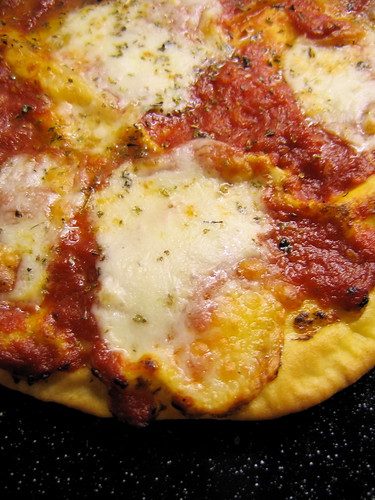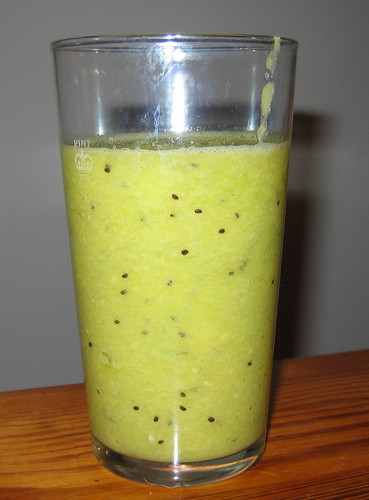
Start with Tipo 00 flour.
So fine and white, it makes your usual flour
seem hard and vulgar,
and makes a dough as silky and elastic as
(supply your own lascivious image here).
For two, use half a pound of flour
with a quarter-pint of water.
Add olive oil, salt and yeast,
knead until smooth and springy
and leave an hour or two;
split into portions, knead again.
Oil the rounds of dough,
drape clingfilm on them lightly,
and leave to swell again.
Only the fussiest stickler would insist
that the tomatoes must be grown
in the volcanic soils of Napoli.
It is enough they are Italian plum tomatoes
—tinned, not fresh—
broken up slightly in the saucepan.
A potato masher is ideal for this.
Then simmer slowly,
for an hour or so,
to thicken, darken and enrich.
Some salt is vital;
they must be savoury as well as sweet.
It is acceptable to add a little something;
a dribble of West Indian pepper sauce
or half a chopped chipotle.
Or crush a clove of garlic,
add it to hot olive oil,
and immediately mix the simmering oil
with your tomato.
Cow’s milk mozzarella is fine, if bland,
but does not have the farmyard sourness
of buffalo.
A variation is a different cheese;
perhaps a little feta or a chèvre.
Roquefort, and other affectations,
should be avoided.
Toppings must be sparing.
Gild the lily lightly.
Perhaps some finely sliced shallot,
a little Jámon Iberico or saucisson,
some kalamata olives.
And don’t forget a pinch of oregano;
get the good stuff at your local Turkish grocer.
Your enemy is moisture.
You must be quick, like a boy scout;
be prepared.
A newly-rolled pizza base, left to sit,
will sweat and stick
like a hot thigh on a leather chair.
Cooking must be hot and quick;
as hot as possible.
Bake the bases for two minutes
with nothing on them.
Then quickly add the toppings
and bake until the crust is golden
and the mozzarella has a hint of colour.
